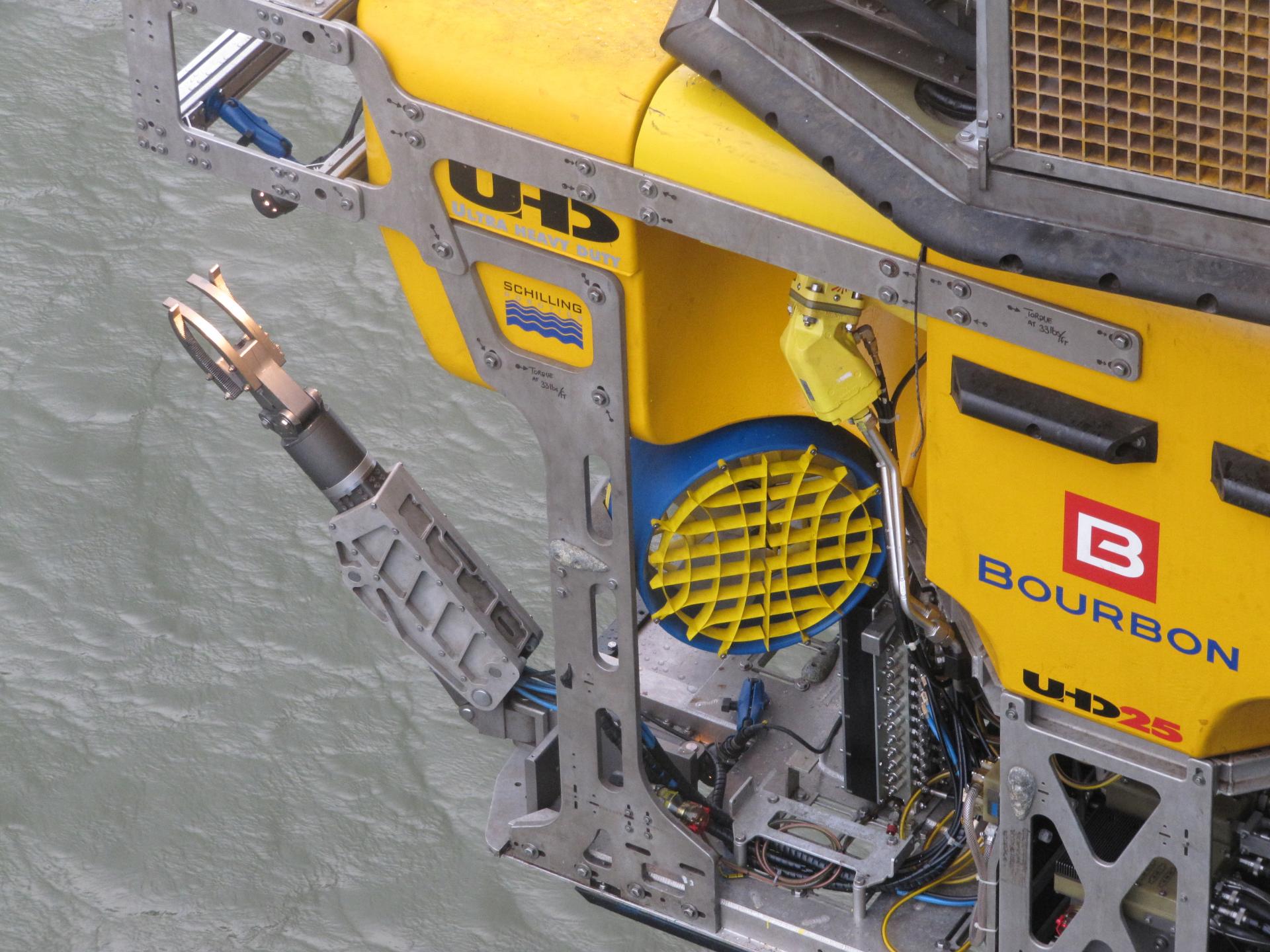
Hydrate cleaning: An alternative to methanol
High-pressure water jet as an alternative to methanol for hydrate cleaning.
One of the challenges for the oil & gas industry is the removal of potentially consolidating hydrates from the exterior of subsea infrastructures. If the method most commonly used is methanol cleaning, efficiency in open water is limited. High-pressure water jet cleaning is an interesting alternative, offering cost and time savings, as well as reduced risks to both people and the environment.
Hydrates are concretions, similar to "ice" in particular pressure and temperature conditions, that can form on subsea infrastructure in deepwater. The effect of hydrates can affect the operation of equipment by restricting movement of parts, hence the need for potential periodical cleaning.
This process relies on heavy duty or ultra-heavy duty underwater remotely operated vehicles (ROVs), which most commonly apply methanol to dissolve the hydrates. While this method can be highly effective, it presents disadvantages.
- It involves pumping the methanol from a floating production system, and diverting the subsea injection point by re-routing piping and installation hoses to “attack” the subsea equipment.
- The removal operation might require around 10,000 to 20,000 litres of methanol as its effectiveness is reduced by the diluting effect of the seawater. When cleaning the inside of undersea infrastructure, methanol injection is highly effective as it is confined and not diluted by seawater.
- Each multi-stage transfer requires careful supervision to safeguard against spillage of methanol, which is dangerous to both people and the environment.
- Due to the volume required, the injection of methanol directly from a ROV-borne skid, typically containing 15 gal bladders, was disregarded.
The method BOURBON finally suggested was to avoid chemicals using a high-pressure water jet to remove the hydrates.
Using local sea water, it would therefore be a genuine cost and time-effective approach.
Poor application could damage the subsea structure and equipment (electrical flying leads, hydraulic lines, etc.), are at risk from a misdirected jet, with potentially significant consequences for the FPSO operator.
BOURBON has conducted this type of water jet cleaning operation using the Bourbon Trieste, a vessel specializing in inspection, maintenance and repair (IMR), working with its ultra-heavy duty ROV. She performed a water jet cleaning operation on a on a subsea X.mas tree in 1,400 m water depth.
BOURBON first tested three types of nozzles to find the most effective design for the job, choosing a pointed nozzle rather than one with a flatter end or a rotating nozzle. Once the process was approved by the client, BOURBON launched the operation with all necessary caution.
The first part of the operation involved a low-pressure jet, created by a Zipjet pump on board the ROV, to remove the loosest layers of concretions. The remaining hydrates were then removed via a high-pressure jet, generated by a Dynaset pump, in several stages.
The ROV started by positioning the jet 1.5-2 metres from the Subsea Equipment, and then gradually approached it to a distance of 50 centimetres. The pressure from the jet could be adjusted during cleaning up to a maximum level, set before the intervention. The highest pressure setting used was 500 bars, ample to deal with almost all hydrate deposits.
The nozzle was located at the end of a "wand", a rod attached to one of the ROV’s robotic arms. The ROV was hung on to the subsea infrastructure with its grabber arm, meaning the wand could be controlled very precisely to clean even the most difficult-to-access parts of the equipment, accurately, safely and with no risk that the wand would damage it.
The cleaning removed all of the hydrates, while protecting the lines and cables on the structure. Since then, BOURBON has successfully carried out this cleaning process several more times, reflecting client’s confidence in the process.

Published in World Oil Magazine - April 2015


